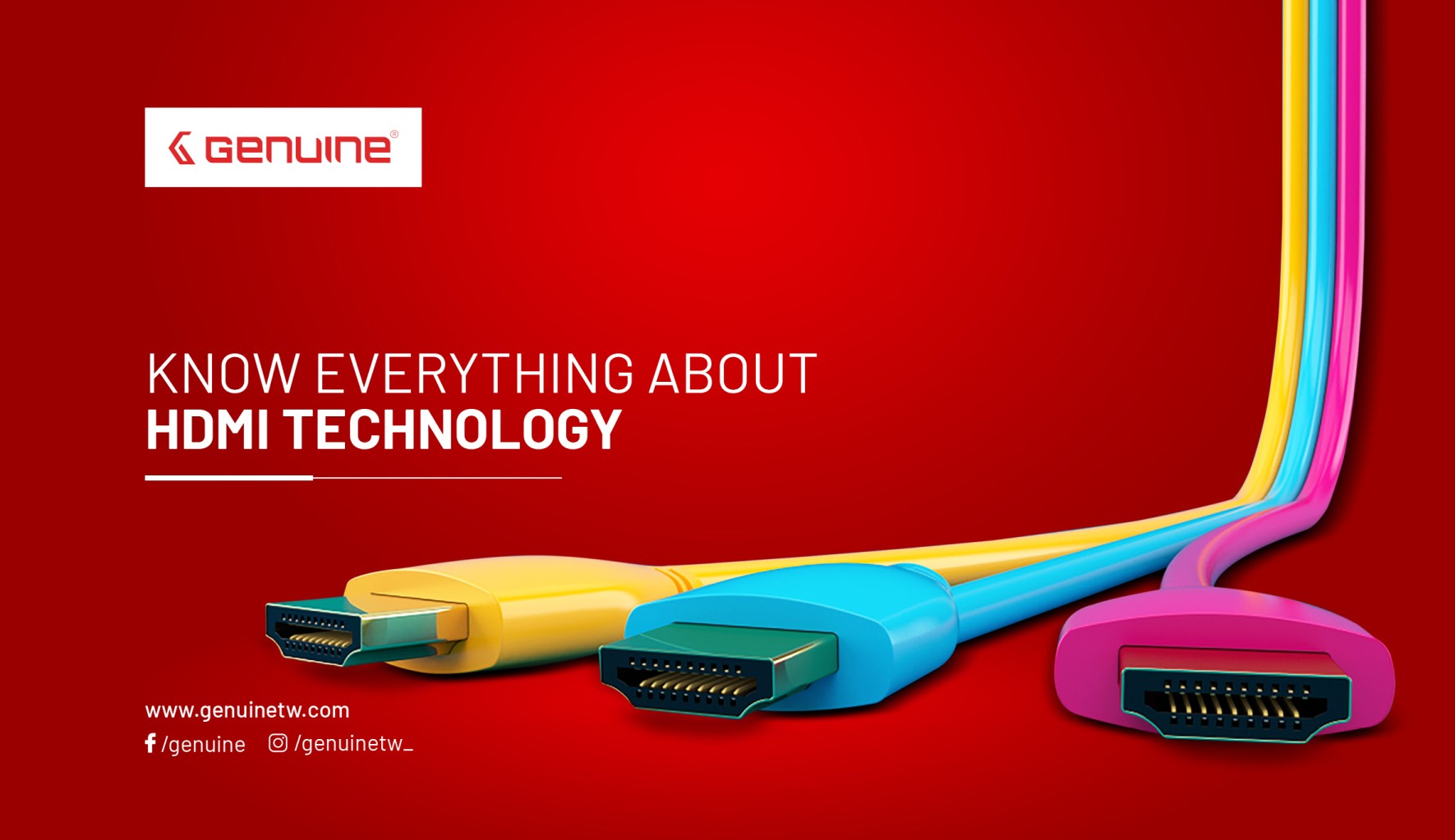
Know Everything about HDMI Technology
High-Definition Multimedia Interface (HDMI) is a proprietary audio/video interface for transmitting uncompressed video data and compressed or uncompressed digital audio data from an HDMI-compliant source device, such as a display controller, to a compatible computer monitor, video projector, digital television, or digital audio device. HDMI is a digital replacement for analog video standards
The video and picture viewing expertise has improved over time. Since the start, analog signals have been the principle technology. Through the years, it evolved to both analog & digital signals together. Now the technology has finally paved its way into the zone of digital signals.
Not just the technology but also the cables which carry these signals, evolved over the time. From the monitor of a computer to a Television set or, even a home theatre system; they all feature various sets of connecting ports. These ports allow the usage of various types of cables and support various set of signals. Driving force behind this change is the growth in scientific developments.
It was the question of survival for several companies. They had to provide the users something new for staying in the aggressive market. The companies finally could take a step forward after investing ample amounts of hard work. So did the buyers. The 21st century is arguably the spark plug of the digital age. The video viewing technology is the driving force behind this.
Before this high definition age, there were many video connections available for TV, VCR, DVD, and HDTV & Monitors. They all operated on analog signals. The most commonly used monitor cable was the Video Graphics Array (VGA) cable. Further developments popularized the Digital Video Interface (DVI). It operated on both analog and digital signals. They all had certain limitations and the latest High Definition Video Interface overcame them all.
HDMI (High Definition Multimedia Interface)
HDMI brought the dawn of this new digital age. It is a technology which came into the market within the first two years of this millennium. HDMI Cables operate this technology, which combines digital video signals and multi channel audio signals into one convenient cable.
How does this differ from earlier cables?
Well for a start, this can remove the maze of wires that used to assemble around your earlier setup! It aids in convenient management of cables as it reduces the complexities and cost.
Quality with More Flexibility
With earlier technology of Digital Video Interface (DVI), you had to plug-in the audio cable separately. As it could carry only the digital video signals, it created this limitation. If its length was more than 16 feet, it compromised with the quality. The usage of HDMI removes this hassle. It can be as long as up to 40 feet while still maintaining the optimum quality
In addition, one does not need to worry if one is looking for an upgrade! HDMI cables are also compatible with the DVI. Hence, it removes the need to upgrade immediately one’s existing cables and components.
Higher Resolution and Remote Control
HDMI is the first and foremost interface to carry high definition video of the likes of 720 & 1080 resolution. It also brings in the multi channeled surround sound signals.
Another key feature of HDMI Cables is that it provides the ability to control the entire system of components and display unit using a single remote control.
Higher Transfer Rate
Above all, HDMI Cable is capable of sending uncompressed digital video and audio signals at a very high transfer rate up to 5 gigabytes per second. In simpler terms, it has the ability to send large amount of data across a long stretch of wire and that too at a very high speed.
As you would know that the high resolution and high definition videos sample at very high rate, the output is sharper and clearer than the analog signal interfaces and the conversion from analog to digital signals can have room.
Since HDMI sockets and cables first appeared in 2002, they haven’t half caused some trouble. They’ve been responsible, for instance, for generations of AV equipment going suddenly and unceremoniously out of date. They’ve led to untold numbers of cable breakages due to their flimsy attachments.
Different HDMI sockets on different devices have bamboozled consumers by supporting different features. People trying to run long HDMI cable runs have sometimes found they get no picture.
Last but not least, ever increasing data demands placed on HDMI cables means they now come in three different grades that you actually need to have at least a rudimentary understanding of, especially if you want to make the most of your AV equipment in 2021, with the likes of the PS5, Xbox One Series X and the latest 4K UHD smart TVs all having different demands when it comes to using the right HDMI cable.
Despite all these issues, though, HDMI connections have endured. Mostly because for all their issues, they’ve remained almost endlessly upgradable, keeping pace with not just the demands of the AV world but, as we’ll see, the world of the smart home, too.
- Best streaming services
- How to watch 4K Netflix
It’s also true, of course, that HDMI cables were designed with the best of intentions: to provide a single-cable digital video and audio solution.
Nonetheless, it’s clear that plenty of HDMI nonsense has happened along the way. So here we attempt to pick through the HDMI myths to provide only the facts that you really need to know and help you choose the best HDMI cable, whether it's for your gaming console, cable box, AV receiver, soundbar, or whatever else you want to plug into your TV.
